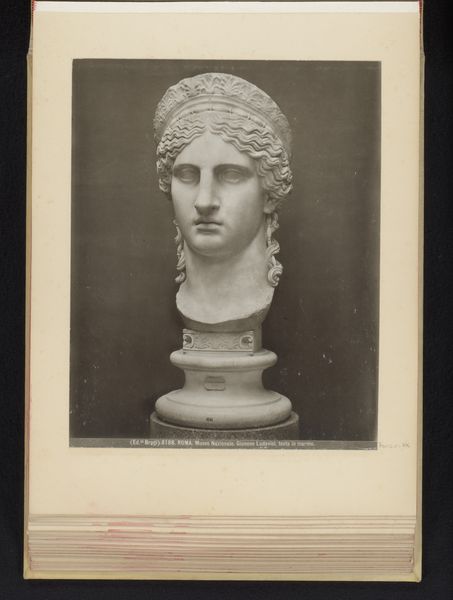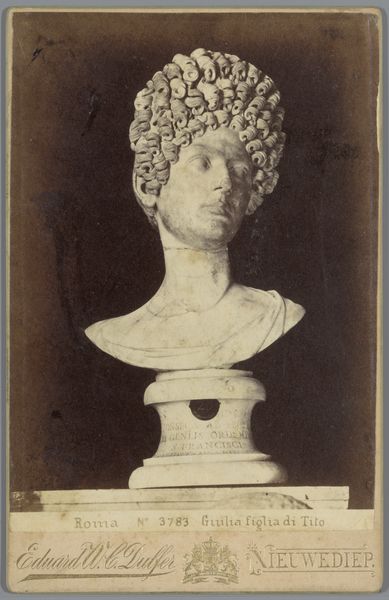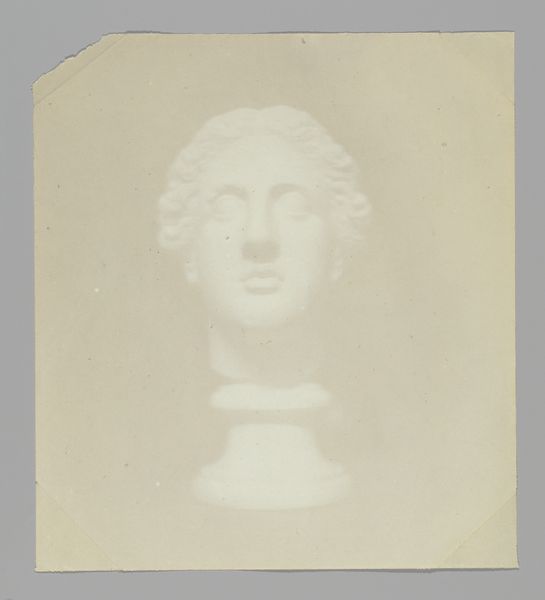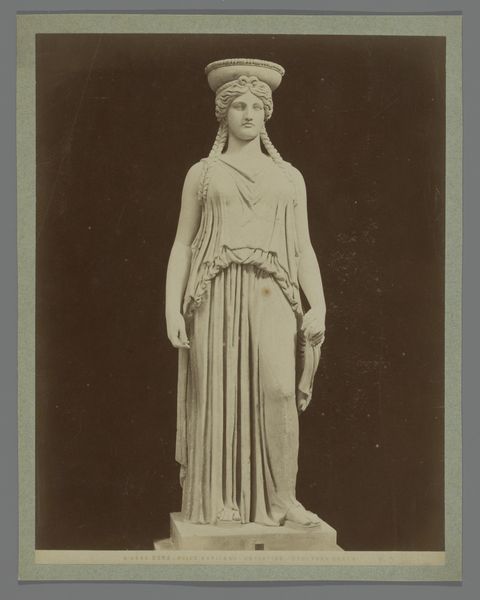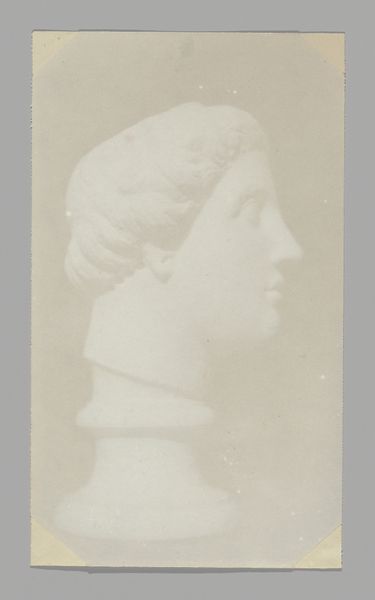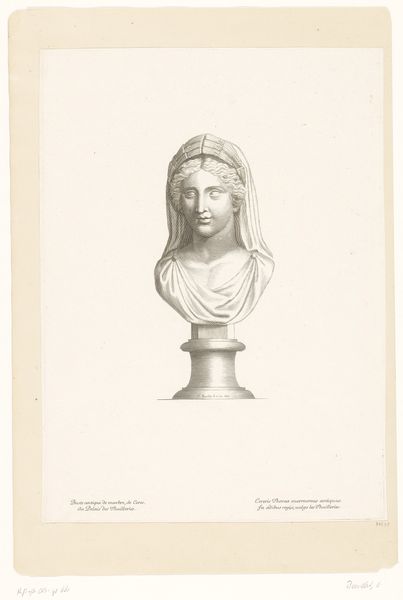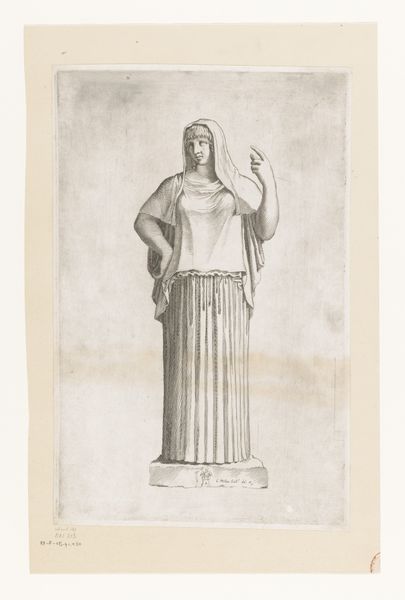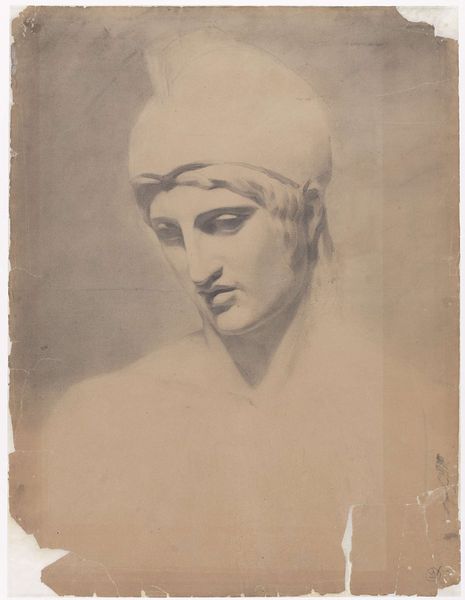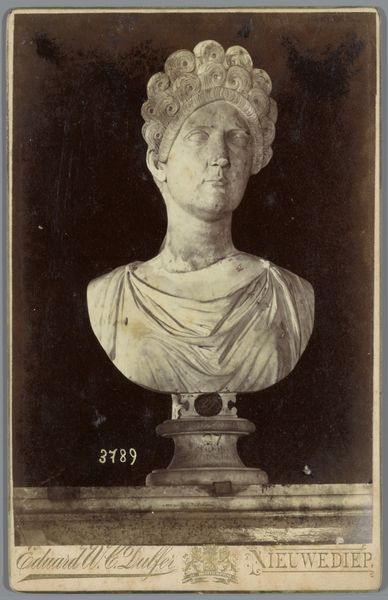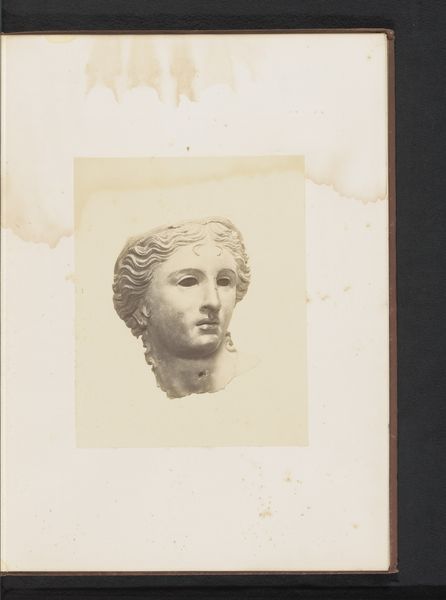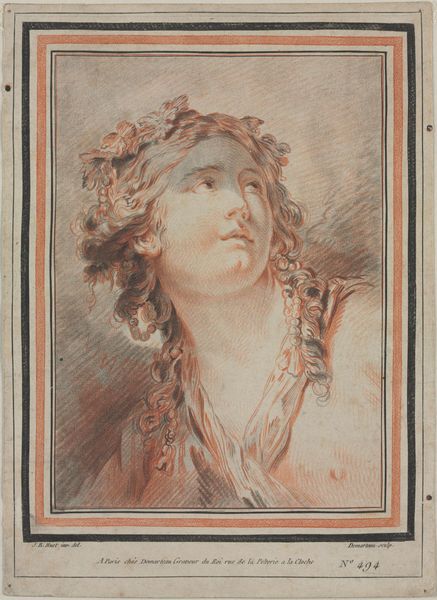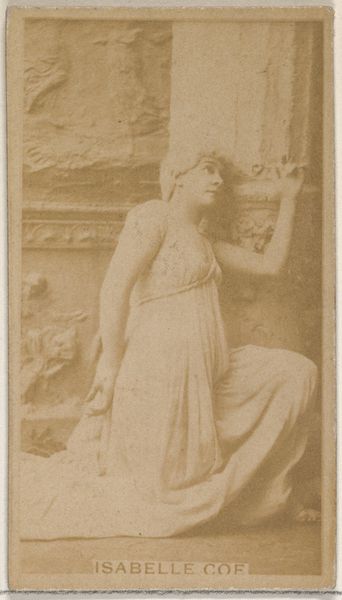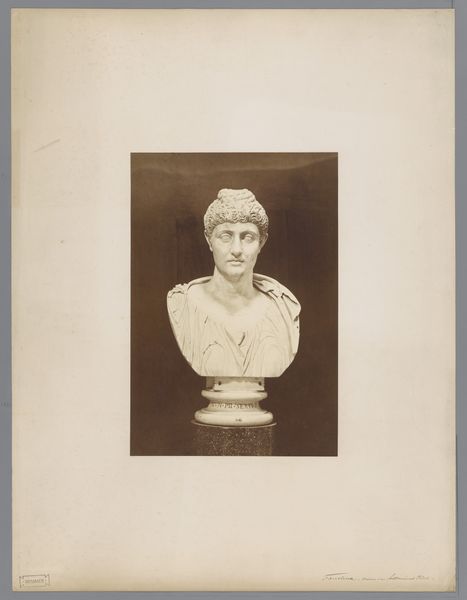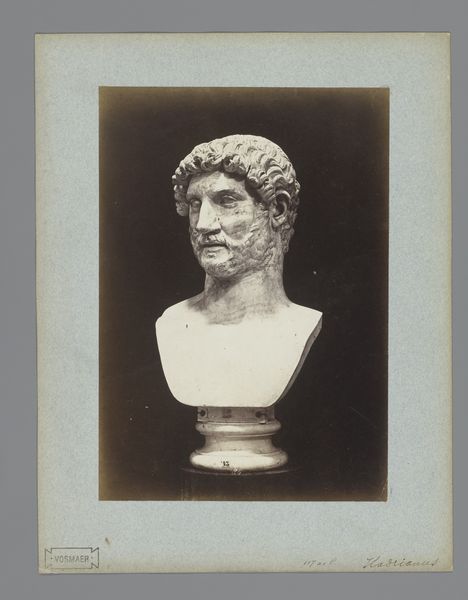
photography, sculpture, gelatin-silver-print, marble
#
portrait
#
statue
#
greek-and-roman-art
#
photography
#
sculpture
#
gelatin-silver-print
#
marble
Dimensions: height 153 mm, width 105 mm
Copyright: Rijks Museum: Open Domain
This is a marble bust of Matidia, the niece of Emperor Trajan, depicted as Melpomene, the muse of tragedy, made by an anonymous artist. The choice of marble is significant. It’s a material associated with classical sculpture, and its cool, smooth texture lends itself well to portraying idealized beauty. Look at the way the sculptor has captured the soft drape of the robes and the intricate curls of hair. This level of detail would have required immense skill and time. The process of carving marble is subtractive, meaning the artist starts with a block and removes material to reveal the form within. This requires careful planning and precise execution. But marble is also a material of social and political importance. It was often used for public monuments and portraits of the elite. This bust is a fascinating example of how the material and making process can imbue an object with cultural meaning and social significance, blurring the lines between fine art and craft.
Comments
No comments
Be the first to comment and join the conversation on the ultimate creative platform.
